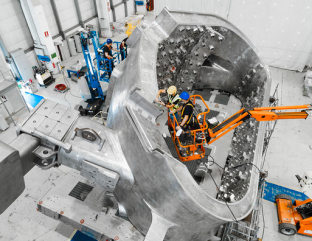
Fusion for Energy (F4E) in collaboration with Ansaldo Nucleare, Westinghouse, and Walter Tosto has completed the manufacture of Europe’s first vacuum vessel ‘sector’ for ITER– the largest international fusion experiment.
In a ceremony held in Monfalcone, at the Westinghouse industrial facility, senior representatives from industry and policymakers gathered to celebrate a technical milestone for the ITER project. The sector’s fabrication builds on ten years of work directly involving more than 150 professionals, and at least 15 companies across Europe with their respective workforces.
F4E, managing Europe’s contribution to ITER, which amounts to nearly half of the project, has successfully created with its industrial partners a first-of-a-kind supply chain which is underpinned by expertise, and the capacity to manufacture complex components for future fusion reactors.
The vacuum vessel can be described as a massive double-walled container that ultimately will house the fusion reaction. It will provide a clean environment blocking any dust, air, liquids and impurities from entering its chamber. Owing to the powerful superconducting magnets that surround the vessel, the plasma will ‘float’ without touching its walls.
The ITER Vacuum Vessel is made of nine sectors. Europe will deliver five of them and the Republic of Korea the remaining four. The component is 19.4 m in diameter, 11.4 m high and weighs approximately 5200 tonnes. It complies with strict operational standards set by France’s Nuclear Safety Authority. Europe’s remaining four sectors are in production and will be delivered in the next two years.
Manufacturing credits
The shape and size of the sector presented its own set of challenges. Each one contains roughly 150 km of welding. More than 20 000 hours of machining and at least 100 000 hours of welding were required to produce it. Two of its segments (1 and 4) were manufactured by Westinghouse, at Monfalcone, while the other two (2 and 3) were produced in Walter Tosto, Chieti, Italy.






